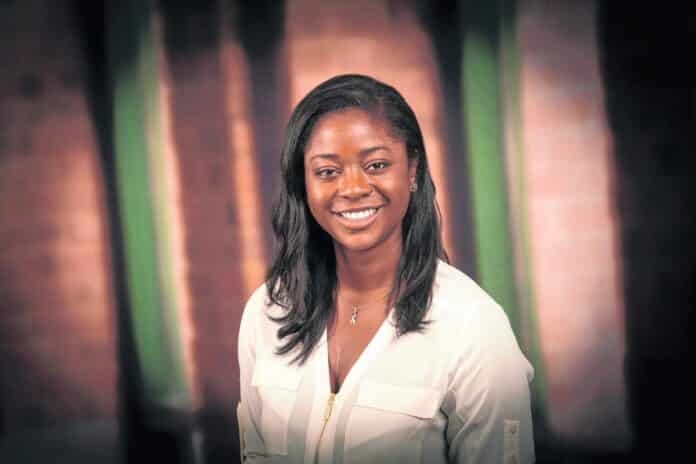As thousands of Bartholomew County students prepare to return to the classroom next month for the first time since March, many parents are faced with the task of helping their children get used to a new concept — wearing a mask at school even if they don’t feel sick.
Many children, particularly younger ones, may find masks uncomfortable, feel scared to wear them or not understand why they’re necessary. And parents may already find it challenging enough to make sure their children wash their hands properly and avoid touching their faces, let alone wear a face mask all day.
But the overwhelming consensus among health experts is that masks can help prevent the spread of COVID-19, especially by people who do not show symptoms, and that the more people who wear masks, the better.
Currently, the federal Centers for Disease Control and Prevention recommend that children ages 2 years and older, as well as adults, wear a face covering or mask that covers their nose and mouth to reduce the chances of spreading or contracting COVID-19.
[sc:text-divider text-divider-title=”Story continues below gallery” ]Click here to purchase photos from this gallery
That measure, if widely adopted by the public, could reduce the chances that schools become breeding grounds for the virus this fall and potentially save lives, according to federal health experts.
Local doctors are urging parents to start looking for masks or face coverings for their children, if they don’t already have them, and have their children practice wearing them for increasingly longer periods of time so they get used to them before they need to wear them all day at school.
Currently, the Bartholomew Consolidated School Corp. plans to start in-person instruction on Aug. 6. Flat Rock-Hawcreek School Corp. plans to start Aug. 4.
BCSC has said the “expectation” will be for students and staff to wear face coverings and will require them to be worn when physical distancing is not possible, including while students are in hallways, awaiting entrance screenings, participating in group activities and taking the bus.
“I would encourage (parents) to let children practice wearing masks at home for short periods of time and just gradually increase that time,” said Dr. Tami Iorio, a pediatrician at Northside Pediatrics. “For example, especially for younger children, maybe set a goal, ‘Let’s see if we can wear a mask for 15 minutes on the first day’ and then over the next few weeks, as we get closer to school, trying to wear the mask a little longer, praising the kids when they are able to keep it in place and when they’re able to not touch or manipulate it too much because this is something new to many people.”
“Just like learning a new skill when you slowly work up to something, I think practicing at home before school for shorter periods and gradually getting longer is the best way to get used to that longer stretch when they’re going to wearing it all day in school,” Iorio said.
The key to finding an effective mask or face covering for children is to ensure that they can properly breathe with it on and that it fits properly, is comfortable and will stay in place once the child puts it on, three local doctors said.
Masks should cover the child’s entire mouth and nose and fit tightly to their face from ear to ear, but not be so tight that it digs into their skin and causes discomfort, said Dr. Nicole Mensah, a pediatrician at Columbus Pediatrics.
One way to tell if a mask is too tight is if the child cannot slip their finger underneath it, Mensah said.
“I think the most important thing is to look for a mask that is a good fit,” Mensah said. “It really defeats the purpose if the child is constantly touching the mask, trying to readjust it, effectively spreading more germs that way. So just finding one that covers their entire mouth, their entire nose and extends from ear to ear is really important.”
There are many different styles of masks and face coverings. Most have elastic loops that go behind the ears or tie behind the head. Other common face coverings include bandanas that are clipped behind the head or a tube of fabric called “neck gators” that go around the neck and can slide up and cover the mouth and nose, Iorio said.
Iorio said she would generally recommend masks that tie behind the head for older children because it may be hard for young children to retie them on their own if they were to get loose, slide down or fall off.
However, no one style of mask will necessarily be right for all children.
“If parents buy masks that have elastic loops behind the ear, they just want to find ones that are comfortable,” Iorio said. “…You want loops that won’t pull on the ears but they need to fit correctly. Some companies have made loops that are adjustable. They have a little bead or something where you can make the loop a little tighter or looser depending the comfort and fit. I think that’s great if parents find those.”
Parents also should consider looking for masks that their child is more likely to want to wear — anything to get them engaged and give them a sense of normalcy — including masks that feature images of their favorite “superheroes, princesses, athletic teams,” said Dr. Brian Niedbalski, Bartholomew County health officer.
While N95 masks are still being prioritized for health care and other essential workers, local doctors say masks that have several layers of fabric may be more effective at filtering out viruses.
“If you’re using cloth, a cloth with a tighter weave or a layered mask that has more than one layer of cloth is going to be more effective at filtering out possible viruses and preventing transmission,” Iorio said. “One way with cloth is to do that is to hold it up to the light and the less light that comes through, the better it’s probably going to filter.”
Niedbalski said he would recommend that “consist of several fabric layers” and are durable and “can be washed and still keep its shape.”
Parents are also advised to purchase two or three masks per child and consider packing extra masks with the child when they go to school, “especially for school-age (kids) who are prone to losing things,” Mensah said.
“The idea is to wash (the mask) at the end of the day,” Mensah said. “Most people should have at least two or three (masks per child) just so they’re not constantly washing and then they have (masks) dry for the next day. But ideally they should be using it once a day, washing it and then using the clean one the next morning.”
The only children who are not typically advised to wear masks are those under the age of 2 years because of strangulation and choking risks and children with intellectual and cognitive disabilities.
Masks, however, are particularly encouraged for children with asthma because they may be at a higher risk for serious COVID-19 infections, Mensah and Iorio said.
But, perhaps, the one of the best way for parents help children get used to wearing masks is to lead by example.
“As a parent, if your child sees that every time you go out to the grocery store, the pharmacy, you’re not wearing a mask, how do you expect them to do not the same when they go to school?” Mensah said.
[sc:pullout-title pullout-title=”How to wear a face mask properly” ][sc:pullout-text-begin]
Cloth face coverings should:
- fit snugly but comfortably against the side of the face
- be secured with ties or ear loops
- include multiple layers of fabric
- allow for breathing without restriction
- be able to be laundered and machine dried without damage or change to shape
— Source: Centers for Disease Control
[sc:pullout-text-end][sc:pullout-title pullout-title=”For more information” ][sc:pullout-text-begin]
For tips on wearing a mask, including how to make one from a T-shirt, visit
www.crh.org/healthy-tomorrow/healthy-tomorrow/2020/06/12/no-mask-here’s-how-to-make-your-own
[sc:pullout-text-end]





